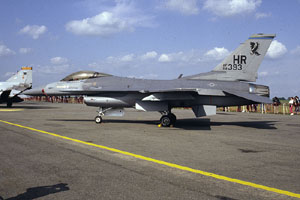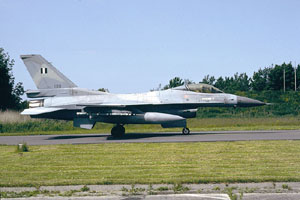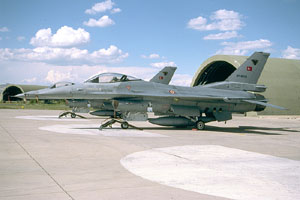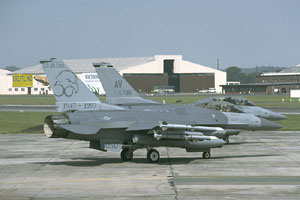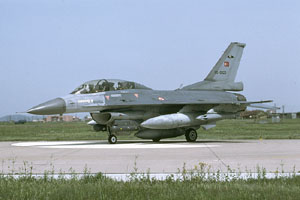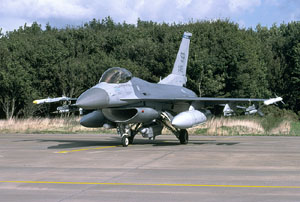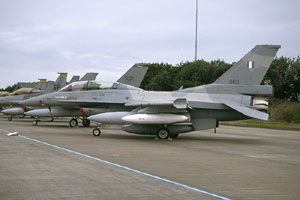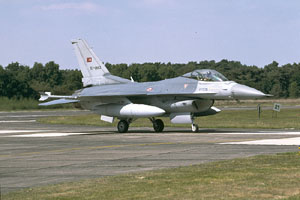F-16C
Block 25 84-1393/HR
In the first half of the 1980's, when the McDonnell Douglas F-15 Eagle was fully
established in service, the F-16 was finally allowed to develop it's qualities.
For political reasons the F-16A and B had remained relatively austere in
equipment until this time. The first of the new breed, F-16C Block 25, first
flew in June 1984. Remarkably, the USAF remained the only user of this block.
All in all, 244 F-16 Block 25's were produced.
A quick means of distinguishing between an F-16A and an F-16C of this early block is the blade antenna on top of the fin root. The antenna had always been threre, but built into the fin root. It had been displaced by a planned but later shelved internal jammer system. The Block 25 also has a better radar than the F-16A/B had. The Block 25 retained the P&W F100 engine.
This aircraft belonged to the 10th TFS, part of the 50th TFW at Hahn, Germany.
Chievres, 20 June 1987.
